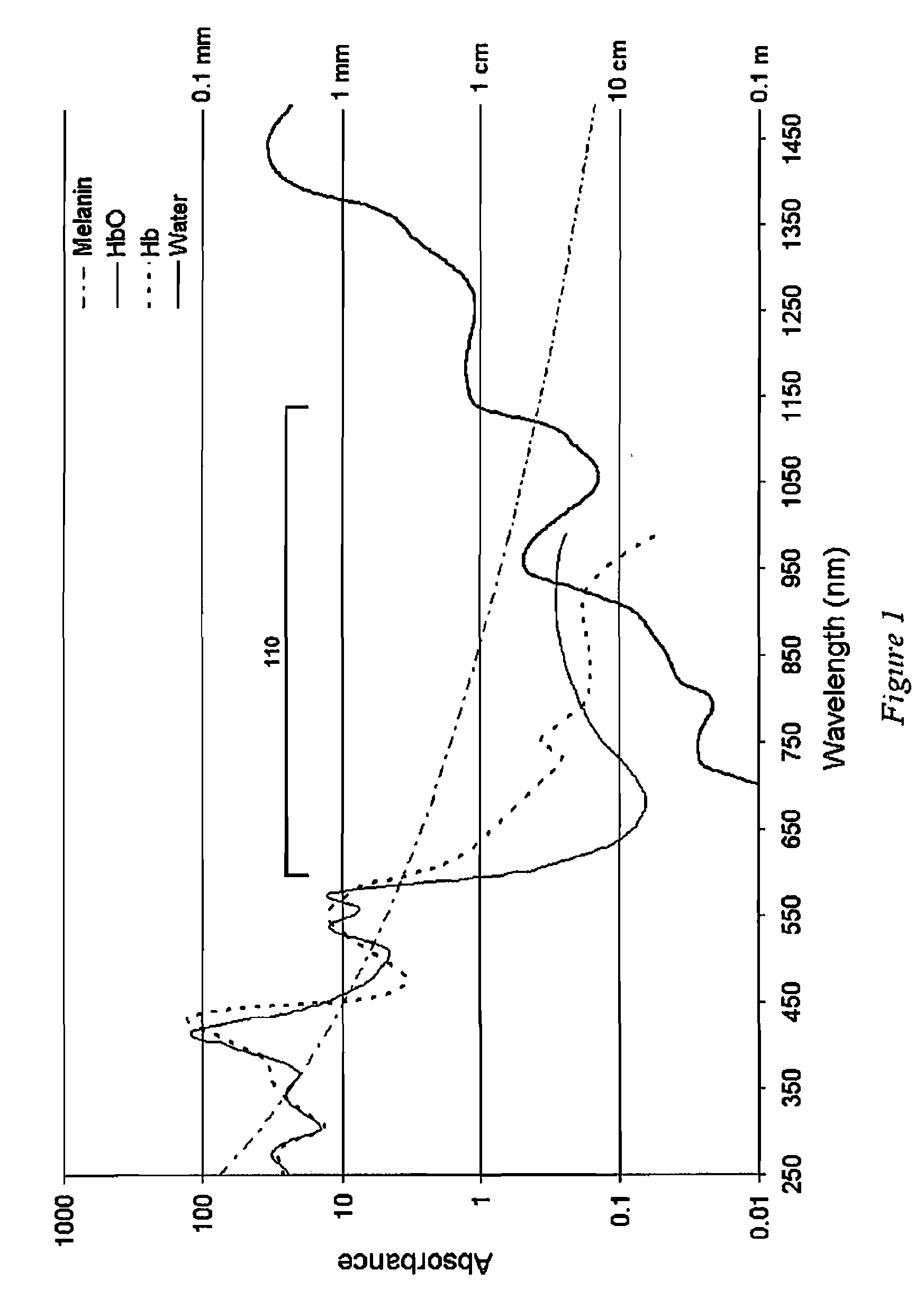Temporal control in phototherapy
a technology of phototherapy and temporal control, applied in the field of phototherapy, can solve the problems of kernicterus, the risk of uv light not being effective in deep tissue treatment, and the risk of newborns with health difficulties, so as to improve the beneficial effect of phototherapy, improve efficiency, and reduce risk
- Summary
- Abstract
- Description
- Claims
- Application Information
AI Technical Summary
Benefits of technology
Problems solved by technology
Method used
Image
Examples
Embodiment Construction
[0080]Phototherapy requires that light be transmitted to the target molecules in the body, but non-target substances in the skin and underlying tissue (which absorb light) prevent it from reaching the target molecules. FIG. 1 shows the major light absorbers in the cutaneous tissue, and the window for light penetration through this tissue. These four major absorbers are reduced hemoglobin (Hb), oxyhemoglobin (HbO), melanin and water. The vertical axis on the left shows typical absorbance of light at different wavelengths (horizontal axis) for these substances. Absorbance is equal to −log10(I / Io) where I is the intensity of light that has passed through an absorber and Io is the intensity of the light before it has passed through the absorber.
[0081]The vertical axis on the right shows the relative penetration depth for light for different wavelengths. For phototherapy to have biological affect, light must penetrate to the target tissue.
[0082]In FIG. 1 the absorption of light by hemogl...
PUM
 Login to View More
Login to View More Abstract
Description
Claims
Application Information
 Login to View More
Login to View More - R&D
- Intellectual Property
- Life Sciences
- Materials
- Tech Scout
- Unparalleled Data Quality
- Higher Quality Content
- 60% Fewer Hallucinations
Browse by: Latest US Patents, China's latest patents, Technical Efficacy Thesaurus, Application Domain, Technology Topic, Popular Technical Reports.
© 2025 PatSnap. All rights reserved.Legal|Privacy policy|Modern Slavery Act Transparency Statement|Sitemap|About US| Contact US: help@patsnap.com



